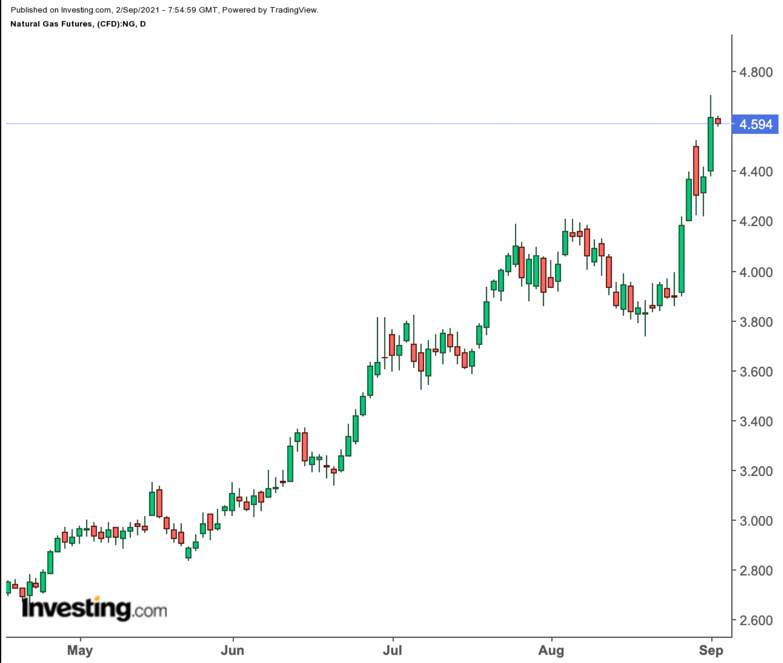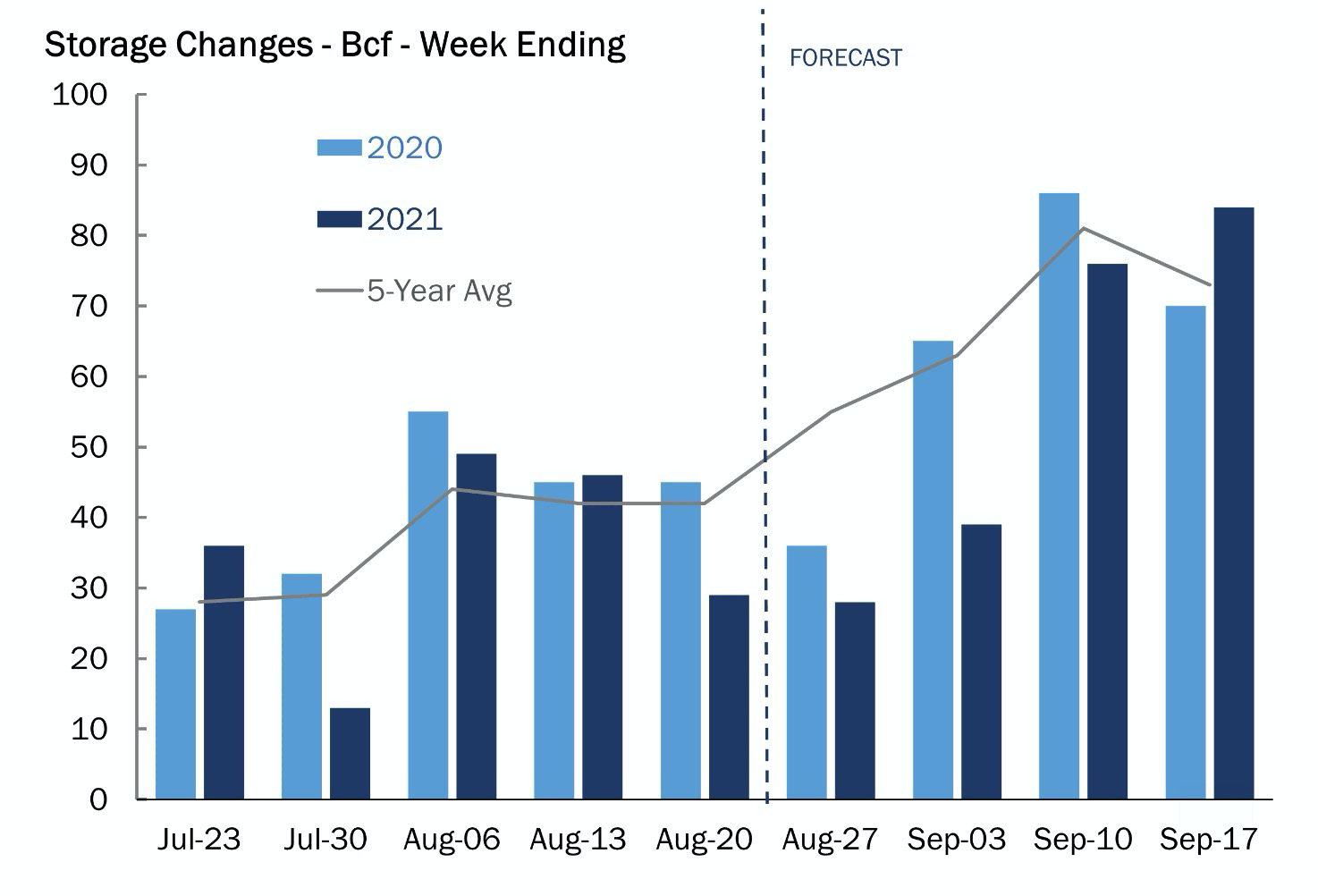That natural gas could go to highs of $5 and above anytime before the end of this week is something even gas bears have resigned themselves to. 
But that’s not the full story: Should a deep freeze hit the United States well before the full brunt of the coming winter, we could see prices double.
John Kilduff, founding partner at New York energy hedge fund Again Capital, is one of those convinced that the gas rally that began in January—as the last winter was just peaking—isn’t ending anytime soon.
This is particularly the case after last week’s Hurricane Ida that shuttered about 85% of the natural gas production in the US Gulf of Mexico.
While the Category 4 hurricane was quickly downgraded to a tropical storm upon making landfall, the outage added to the strain of a critically stretched resource barely able to meet outsized demand—first for cooling in the summer and now for heating in the 20/21 winter.
As of Wednesday, only a few customers in New Orleans, where the storm made a direct hit, were able to turn the lights on, as power outages remained widespread along the coast. Reports indicated it could be weeks before power is restored across the region and the Gulf of Mexico oil and natural gas industry is fully back to work.
An estimated 2.1 bcf, or billion cubic feet a day, was shut-in during the last four days of August due to the storm, said analysts at Rsytad Energy, a research service for energy markets.
Shipments of LNG, or liquefied natural gas, were also likely to be impacted, analysts at Rystad told industry news portal naturalgasintel.com:
“Expect a minimal feed gas supply impact for LNG export facilities. There also is unlikely to be a ‘slowdown in ships leaving Gulf Coast ports. LNG export volumes are therefore expected to remain strong, averaging 9.8 Bcf/d in 2021, even if partial disruptions to feedgas volumes are incurred.”
What this means for sure is higher gas prices.
Said Kilduff:
“There’s not going to be any retreat in this gas rally. This loss in Gulf of Mexico production, though temporary, has only made things worse.”
“Five dollar gas is the least we could be looking at. But if you get an early cold snap in late November/December, then you’re looking at double digit pricing.”
Natural gas gained almost 12% in August, rising for the seventh in eight months which have propelled it into this year’s best winning commodity with a total return of 50%.
In Wednesday’s trading alone, gas futures on the New York Mercantile Exchange’s Henry Hub shot up nearly 6% at one point, bringing the spot October contract to a high of $4.65 per mmBtu, or million metric British thermal units, with a gain of 25 cents.
Dan Myers, analyst at Houston-based gas markets consultancy Gelber & Associates, reflected on the market’s momentum in note to the firm’s clients, seen by Investing.com.
Myers explained:
“Though there is plenty of time left until the October contract’s eventual settle, historically, no October contract has closed past $4 since 2008, which closed at a final price of $7.47/mmBtu.”
“Concerns of winter undersupply, exacerbated by production problems associated with now Tropical Depression Ida, have injected a shot of adrenaline into the market, leading to the current elevated pricing we are witnessing today.”
 Source: Gelber & Associates
Source: Gelber & Associates
The observations by Kilduff and Myers came as the gas market readied for another weekly update of gas in storage.
Analysts tracked by Investing.com expect an injection of 25 bcf, or billion cubic feet, into storage during the week ended Aug. 27, from what was left over from new production not burned for power generation and cooling.
While that’s slightly lower than the 29 bcf build in the previous week to Aug. 20, it was less than half of the five-year average of 53 bcf for injections.
The thinner build in gas supplies came during a week of stifling warm temperatures in the US Northeast, which caused a spike in cooling demand in the largest gas-driven cooling and heating market.
The Gelber note adds:
“Given that wind generation did increase during the week of August 27th, there is some room for the injection to run a little higher as a result of lower gas generation.”
“However, overall, tomorrow’s lower than average storage injection has the potential to drive the market even higher, given that there is enough momentum leftover from today’s impressive move upwards.”
Disclaimer: Barani Krishnan uses a range of views outside his own to bring diversity to his analysis of any market. For neutrality, he sometimes presents contrarian views and market variables. He does not hold a position in the commodities and securities he writes about.
